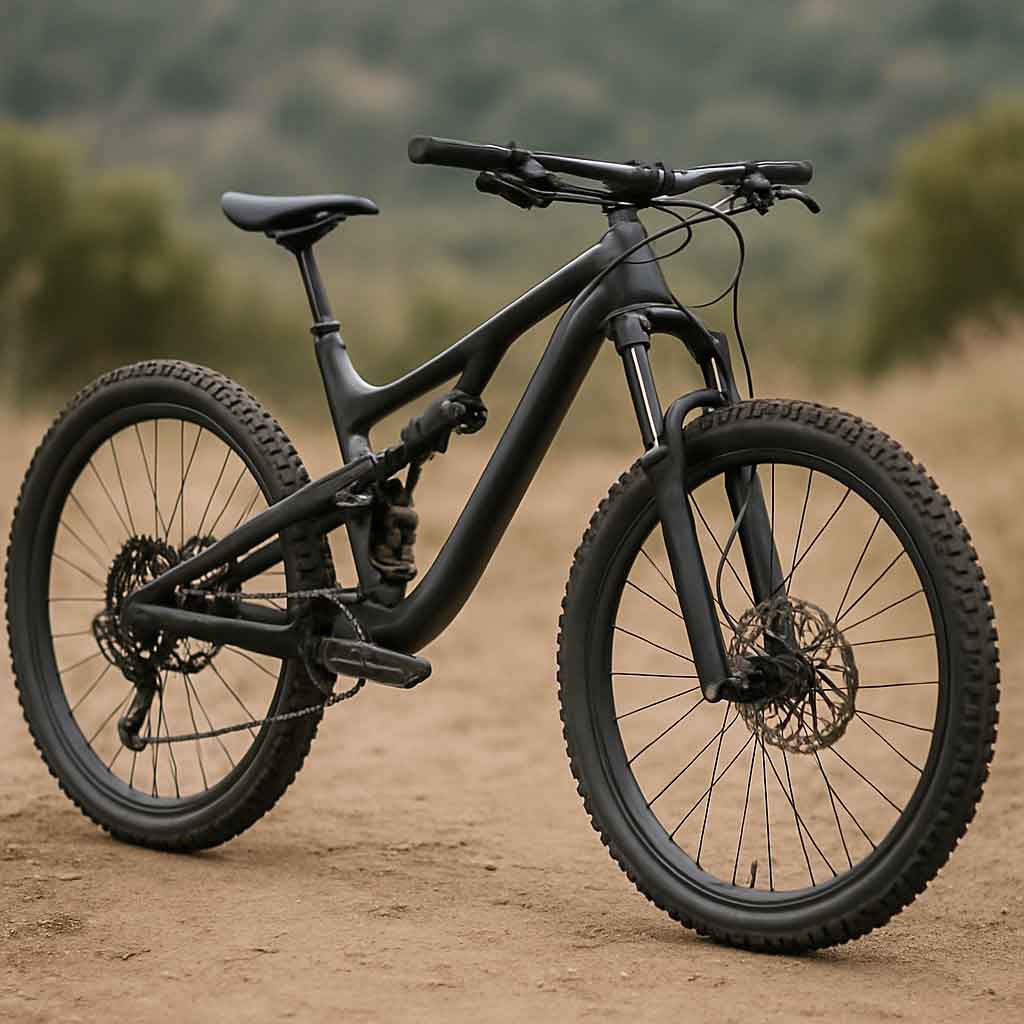Welcome to Mondince Bike - A well-known factory specialized in produce carbon bike frame and other parts since 2007.
Innovative Bike Light Technologies to Consider
Cycling is an exhilarating activity that combines exercise, exploration, and sometimes, necessity. However, ensuring safety while on the road is paramount. A critical component of cycling safety is the use of appropriate bike lights. With technological advancements, bike lights have evolved, offering increased efficiency, brightness, and longevity. This article delves into some of the most innovative bike light technologies available today, aiding you in selecting the best options for your nocturnal rides.
.jpg)
Why Bike Lights Matter
Bike lights are not just an accessory; they are a lifeline for cyclists, providing crucial benefits in terms of visibility and safety.
Visibility for Cyclists
Visibility is a two-way street: you need to see and be seen. Bike lights illuminate the path ahead, allowing you to navigate with confidence. They also make you more visible to pedestrians and other vehicles, reducing the risk of accidents. This dual role of bike lights is particularly crucial during dawn, dusk, or in conditions where visibility is compromised.
Safety on the Road
Safety is the primary concern for any cyclist, and bike lights play a pivotal role in this regard. Proper lighting can significantly lower the risk of collisions by alerting motorists to your presence. A well-lit bike ensures that you are noticeable from a distance, giving drivers ample time to react and adjust their driving accordingly.
Legal Requirements and Compliance
In many regions, using bike lights is not just a recommendation; it's a legal requirement. Compliance with local laws often mandates the use of front and rear lights during certain times of the day or under specific weather conditions. Understanding and adhering to these regulations can prevent legal issues and enhance your safety on the road.
Types of Bike Lights
Choosing the right type of bike light is crucial for ensuring optimal visibility and safety. Each type of light serves a distinct purpose and caters to different needs.
Front Bike Lights
Front bike lights, or headlights, are essential for illuminating your path. They come in various brightness levels, allowing you to choose based on your riding conditions. High-lumen lights are ideal for dark, rural areas, while lower-lumen options suffice for well-lit urban environments. Adjustable beam patterns in some models further enhance your ability to focus light where it's needed most.
Rear Bike Lights
Rear bike lights, often red, are vital for alerting vehicles approaching from behind. They can be set to steady or flashing modes, each serving different visibility needs. Flashing modes are particularly effective in grabbing attention, making them a popular choice for urban cyclists navigating through heavy traffic.
Side Lights
Side lights provide lateral visibility, crucial at intersections where side impacts are more likely. They ensure that you are visible from all angles, enhancing overall safety. These lights often come with unique designs, such as wheel lights, which not only improve visibility but also add a touch of style to your ride.
Helmet and Handlebar Mounted Lights
Helmet-mounted lights offer directional lighting, perfect for scanning your surroundings or making eye contact with drivers. They move with your head, providing light exactly where you look. Handlebar-mounted lights, on the other hand, offer a broader beam and are ideal for illuminating the road ahead, making them a staple for most cyclists.
Specialty Lights for Unique Needs
Some cyclists may have unique lighting needs, such as those who ride off-road or in challenging conditions. Specialty lights, such as those with extreme brightness or weatherproofing, cater to these specific requirements, ensuring that all cyclists can find the perfect lighting solution for their needs.
Key Features to Look for in Bike Lights
Selecting the right bike lights involves considering various features that impact performance and usability.
Brightness and Beam Patterns
Brightness, measured in lumens, is a critical factor in choosing bike lights. Urban cyclists may require lower lumens, while rural riders might need higher lumen counts for unlit roads. Additionally, understanding beam patterns—whether they are narrow for focused light or wide for broader visibility—can enhance your cycling experience and safety.
Battery Life and Rechargeability
Battery life is a vital consideration, especially for long-distance or frequent cyclists. Rechargeable bike lights offer convenience and cost savings over time, with many models providing USB charging options. Disposable batteries, while less environmentally friendly, may offer the benefit of immediate replacement without waiting for a recharge.
Durability and Weather Resistance
Durability is essential for any outdoor gear, and bike lights are no exception. Look for models that are water-resistant and made from robust materials. Weatherproof lights ensure that you can ride confidently in rain or shine, without worrying about light failure due to environmental conditions.
Mounting Options and Flexibility
The ability to easily mount and adjust your lights can make a significant difference in usability. Sturdy and adjustable mounting brackets ensure a secure fit, preventing lights from shifting during rides. Some lights offer versatile mounting options, allowing them to be placed on helmets, handlebars, or seat posts, providing flexibility in how you light your ride.
Innovative Bike Light Technologies
Technological advancements have revolutionized bike lights, introducing innovative features that enhance the cycling experience.
Smart Bike Lights and Connectivity
Smart bike lights have transformed the cycling experience by integrating technology into lighting solutions. Features such as automatic on/off, brightness adjustment based on ambient light, and smartphone connectivity for control and monitoring are now common. These smart features not only enhance safety but also add convenience and customization to your cycling routine.
Advanced LED Technology
LED technology remains a popular choice due to its efficiency and longevity. LED lights provide powerful illumination while consuming less power, making them ideal for long rides. Innovations in LED technology have led to brighter lights with more focused beams, enhancing visibility and safety for cyclists.
Innovative Laser Light Technology
Laser light technology is an exciting development in cycling safety. These lights project symbols or lanes onto the road, creating a visual boundary around the cyclist. This feature not only improves visibility but also communicates your presence and intended path to other road users, significantly enhancing safety.
Eco-Friendly Solar-Powered Lights
For environmentally conscious cyclists, solar-powered bike lights offer a sustainable alternative. These lights harness sunlight during the day to provide illumination at night, reducing reliance on disposable batteries. As solar technology advances, these lights are becoming more efficient and reliable.
Integrated Light Systems and Design
Some modern bicycles come equipped with integrated light systems, seamlessly built into the frame. These systems often include both front and rear lights, providing a sleek and practical lighting solution. Integrated systems eliminate the hassle of mounting and ensure that your lights are always ready for use.
Choosing the Right Bike Lights for You
Selecting the right bike lights involves assessing your specific needs and preferences to ensure safety and satisfaction.
Evaluating Your Riding Conditions
Consider the typical environments you cycle in. Urban settings may require less powerful lights due to ambient lighting, whereas rural or off-road conditions may necessitate brighter lights with broader beams. Understanding your riding conditions will help you choose lights that enhance your visibility and safety.
Budgeting for Quality and Features
Bike lights vary in price, and it's important to balance cost with quality and features. Determine your budget and prioritize features that are essential for your safety and convenience. Investing in quality lights can offer better performance and longevity, making it a worthwhile expenditure.
Testing and Reviews
Whenever possible, test bike lights in-store to evaluate brightness, beam pattern, and ease of use. Online reviews and recommendations from other cyclists can also provide valuable insights into the performance and reliability of different models, aiding in your decision-making process.
Accessories and Enhancements
Consider additional accessories that can enhance the functionality of your bike lights. Extra mounts, battery packs, and light diffusers can provide added convenience and versatility, ensuring that your lighting setup meets all your cycling needs.
Maintenance and Care
Regular maintenance is crucial to ensure your bike lights remain in optimal working condition.
Routine Checks and Cleaning
Regularly inspect your bike lights for any signs of damage or wear. Clean the lenses to ensure maximum brightness and check connections and mounts for stability. These routine checks can prevent unexpected failures and prolong the life of your lights.
Battery Management
Proper battery management is essential for rechargeable lights. Charge batteries as needed and avoid letting them deplete completely, as this can reduce their lifespan. For lights with disposable batteries, keep spares handy to ensure you're never caught without illumination.
Storage and Protection
Store your bike lights in a dry place to prevent moisture damage. When not in use, removing lights from the bike and storing them indoors can protect them from theft and weather-related wear.
Conclusion
Investing in innovative bike light technologies is a wise choice for any cyclist. By choosing the right lights, you enhance your safety and elevate your riding experience. Whether you opt for LED lights, smart features, or eco-friendly options, the right lights will make every ride more enjoyable and secure.
Remember, visibility is crucial, so equip your bike with the best lights available to ensure you're seen and safe on the road. Happy cycling!











